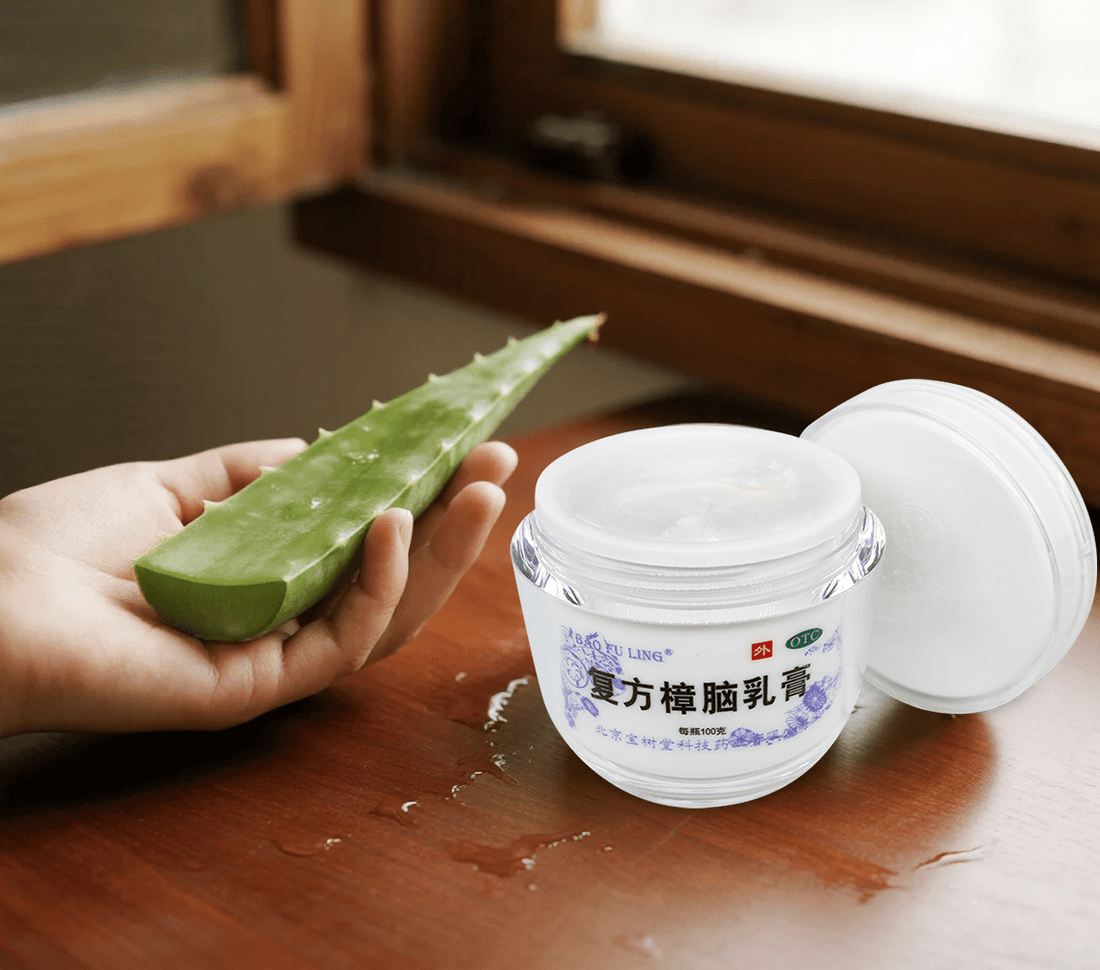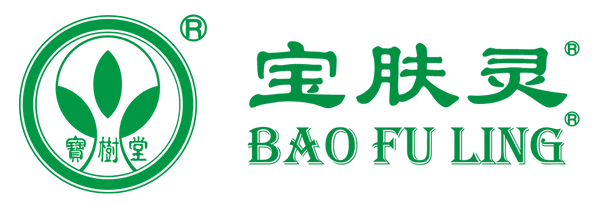
Non-Steroidal Solutions for Eczema – Clinical Review of Camphor Cream (Bao Fu Ling)
Share
Eczema (Atopic Dermatitis): Overview
Eczema, also known as atopic dermatitis, is a common chronic inflammatory skin condition characterized by recurrent flare-ups. It primarily affects infants, children, adolescents, and individuals with allergic constitutions. Clinical features include dry skin, redness, intense itching, scaling, oozing, and crusting, which can significantly impact quality of life and mental health [1] .
1. Common Symptoms
- Intense itching (often worse at night)
- Red patches, papules, blisters, or crusts
- Dry, flaky, and rough skin
- Chronic and recurrent course, commonly distributed on hands, face, neck, and flexural areas of limbs

2. Causes of Eczema
Eczema results from the interplay of multiple internal and external factors:
- Immune Dysregulation: Overreactive response to environmental or food allergens
- Skin Barrier Dysfunction: Reduced sebum production leads to dryness and increased penetration of irritants
- Environmental Triggers: Climate changes, dust mites, molds, animal dander, etc.
- Psychological Stress: Emotional fluctuations can worsen eczema
- Food Allergies: Some individuals are allergic to eggs, milk, nuts, and other foods
3. Basic Daily Care Advice
- Keep skin moisturized: Use fragrance-free moisturizers daily to prevent dryness
- Avoid scratching: Scratching aggravates symptoms and increases the risk of infection
- Minimize exposure to irritants: Such as fragrances, dyes, wool, and hot water
- Proper use of topical medications: Such as anti-inflammatory, antipruritic, and skin-repair creams (e.g., Bao Fu Ling Compound Camphor Cream, calamine lotion)
- Maintain regular routines and reduce stress: Helps stabilize symptoms
With increasing public awareness of steroid-free and natural skincare, modern herbal compound products like Bao Fu Ling Compound Camphor Cream have gained recognition. Multiple clinical observations suggest its effectiveness in alleviating discomfort from eczema, pityriasis rosea, neurodermatitis, and radiation dermatitis [2][3] .
4. Pharmacological Basis of Bao Fu Ling Compound Camphor Cream
According to published medical literature, Bao Fu Ling is a non-steroidal, multi-component topical cream combining both herbal and Western medicine ingredients for synergistic effects [1][2] :
| Ingredient | Main Actions & Pharmacology |
|---|---|
| Camphor | Cooling, relieves itching, promotes local blood circulation, mild anesthetic |
| Menthol | Activates cold receptor TRPM8, provides quick itch relief |
| Diphenhydramine | H1 antihistamine, suppresses allergic reactions |
| Methyl Salicylate | Anti-inflammatory, analgesic, promotes blood circulation |
| Glycyrrhetinic Acid | Steroid-like anti-inflammatory action, without typical steroid side effects [4][5] |
| Chlorhexidine Gluconate | Broad-spectrum antibacterial, prevents secondary infection |
Among these, glycyrrhetinic acid (from licorice root) demonstrates significant anti-inflammatory effects, modulating multiple inflammation-related targets. It acts synergistically with glucocorticoids but does not produce their common side effects [4][5] .
5. Clinical Application Analysis
Eczema and Neurodermatitis:
Clinical studies show that Compound Camphor Cream can significantly relieve chronic itching and inflammation. When combined with traditional Chinese medicine (such as Chushi Weiling Decoction), the total efficacy rate reaches 96%, superior to the control group (P < 0.01) [6] .

Pityriasis Rosea:
Used as an adjunct therapy, Bao Fu Ling Compound Camphor Cream accelerates rash resolution and relieves itch, with a total efficacy rate of 100% (P < 0.05) [7] .

Radiation Dermatitis:
Prophylactic use significantly reduces the incidence and severity of dermatitis, especially in elderly patients receiving radiotherapy for nasopharyngeal carcinoma (P < 0.01) [8] .

6. Conclusion
Bao Fu Ling Compound Camphor Cream combines multiple active ingredients to provide antipruritic, anti-inflammatory, antibacterial, and skin barrier repair effects. It is suitable for managing chronic skin diseases and daily skin discomfort. Clinical data support its efficacy and safety in conditions such as eczema, pityriasis rosea, and radiation dermatitis, making it a reliable non-steroidal topical cream option [1-8] .
References
- Xie N, et al. Progress in Anti-Inflammatory and Antipruritic Drugs for Insect Bites. China Prescription Drug, 2021, 15(1): 12–14.
- Zhang S, et al. Clinical Experience of Compound Camphor Cream in Dermatology. Food & Health, 2017, 4(17): 38–39.
- Liu S, et al. Observation on the Efficacy of Compound Camphor Cream for Localized Neurodermatitis. Journal of Pharmacoepidemiology, 2016, 25(12): 755–756.
- Dong F, et al. Anti-Inflammatory Mechanism of Glycyrrhetinic Acid and its Derivatives. Dalian Medical University Journal, 2014, 36(2): 195–197.
- Zhang M, et al. Glucocorticoid-Like Actions of Glycyrrhizic Acid and its Aglycone Glycyrrhetinic Acid. Modern Drugs & Clinic, 2011, 26(1): 33–35.
- Du J, Fang N. Clinical Study of Chushi Weiling Decoction Combined with Moxibustion and Compound Camphor Cream in Treating Dampness-Obstruction Type Eczema. New Chinese Medicine, 2021, 53(7): 42–46.
- Xue WJ, et al. Analysis of Treatment Effects of Pityriasis Rosea. China Community Physician, 2021.
- Chen BQ, et al. Effect of Timing of Bao Fu Ling Application in Preventing and Treating Radiation Dermatitis in Elderly Nasopharyngeal Carcinoma Patients. China General Nursing, 2015, 13(6): 554–555.
